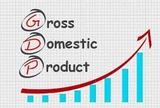
The students will be anle to kow about the definition of National Income , concepts and Methods.
- Subject:
- Arts and Humanities
- Marketing
- Material Type:
- Lecture Notes
- Author:
- SUGAPRIYA S.P
- Date Added:
- 04/11/2021

The students will be anle to kow about the definition of National Income , concepts and Methods.
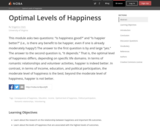
This module asks two questions: “Is happiness good?” and “Is happier better?” (i.e., is there any benefit to be happier, even if one is already moderately happy?) The answer to the first question is by and large “yes.” The answer to the second question is, “it depends.” That is, the optimal level of happiness differs, depending on specific life domains. In terms of romantic relationships and volunteer activities, happier is indeed better. In contrast, in terms of income, education, and political participation, the moderate level of happiness is the best; beyond the moderate level of happiness, happier is not better.
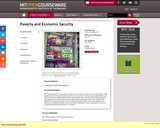
This course explores the evolution of poverty and economic security in the United States, within a global context. It examines the impact of recent economic restructuring and globalization, and reviews the current debate about the fate of the middle class, sources of increasing inequality, and approaches to advancing economic opportunity and security. In this class, students will study the topic of poverty and economic security through the lens of the lived experience of Americans: individuals, families, and households; exploring the history, geography, and forces shaping the likelihood of being poor in America.

This course explores the evolution of poverty and economic security in the United States, within a global context. It examines the impact of recent economic restructuring and globalization, and reviews the current debate about the fate of the middle class, sources of increasing inequality, and approaches to advancing economic opportunity and security. In this class, students will study the topic of poverty and economic security through the lens of the lived experience of Americans: individuals, families, and households; exploring the history, geography, and forces shaping the likelihood of being poor in America.

This course covers theory and evidence on government taxation policy. Topics include tax incidence, optimal tax theory, the effect of taxation on labor supply and savings, taxation and corporate behavior, and tax expenditure policy.

In this lesson, students read about incidences of racial discrimination and how those incidences were met with methods of protests. They engage in an activity that matches programs for low-income people with the type of economic inequity the program addresses and observe an activity simulating tax payments and transfers.
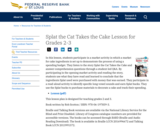
In this lesson, students participate in a market activity in which a market for cake ingredients is set up to demonstrate the process of using a spending budget. They listen to the story Splat the Cat Takes the Cake and answer comprehension questions through a student-led Q&A. By participating in the opening market activity and reading the story, students use what they have read and learned to conclude that the ingredients Splat used were purchased with money that was earned. They participate in a read-aloud activity to identify specific long-vowel sounds and earn Splat bucks. They use the Splat bucks to purchase materials to decorate a cake and track their spending.
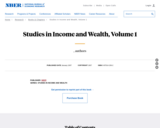
This volume is the first in a series of studies by the Conference on Research in National Income and Wealth (CRIW). The selected papers in this volume are from the meetings of the American Economic and American Statistical Associations in December 1936, and from the second CRIW meeting in January 1937.

This textbook is not intended to be an exhaustive treatise; rather, it is intended to be far more useful than that for beginning tax law students by equipping the novice not merely with unmoored detail but rather with a rich blueprint that illuminates the deeper structural framework on which that detail hangs (sometimes crookedly). Chapter 1 outlines the conceptual meaning of the term “income” for uniquely tax purposes (as opposed to financial accounting or trust law purposes, for example) and examines the Internal Revenue Code provisions that translate this larger conceptual construct into positive law. Chapter 2 explores various forms of consumption taxation because the modern Internal Revenue Code is best perceived as a hybrid income-consumption tax that also contains many provisions—for wise or unwise nontax policy reasons—that are inconsistent with both forms of taxation. Chapter 3 then provides students with the story of how we got to where we are today, important context about the distribution of the tax burden, the budget, and economic trends, as well as material on ethical debates, economic theories, and politics as they affect taxation.
Armed with this larger blueprint, students are then in a much better position to see how the myriad pieces that follow throughout the remaining 19 chapters fit into this bigger picture, whether comfortably or uncomfortably. For example, they are in a better position to appreciate how applying the income tax rules for debt to a debt-financed investment afforded more favorable consumption tax treatment creates tax arbitrage problems. Congress and the courts then must combat these tax shelter opportunities (sometimes ineffectively) with both statutory and common law weapons. Stated another way, students are in a better position to appreciate how the tax system can sometimes be used to generate (or combat) unfair and economically inefficient rent-seeking behavior.

Today, every state has an unemployment insurance program. This provides some income to qualified, unemployed workers who have lost their jobs through no fault of their own. But how did these programs begin and how does the federal-state partnership work? The December 2020 issue of Page One Economics®: Focus on Finance describes this partnership that began in 1935.

Differentiate between open and closed stratification systemsDistinguish between caste and class systemsUnderstand meritocracy as an ideal system of stratification
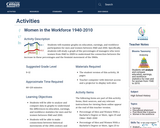
Students will examine graphs on education, earnings, and workforce participation for men and women between 1940 and 2010. Specifically, students will study a graph of the percentages of managers who were women from 1940 to 2009 to understand the connection between the increase in these percentages and the feminist movement of the 1960s.
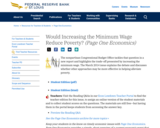
The nonpartisan Congressional Budget Office tackles that question in a new report and highlights the trade-off presented by increasing the minimum wage. The March 2014 issue explains the debate and discusses whether other approaches may be more effective in helping alleviate poverty.